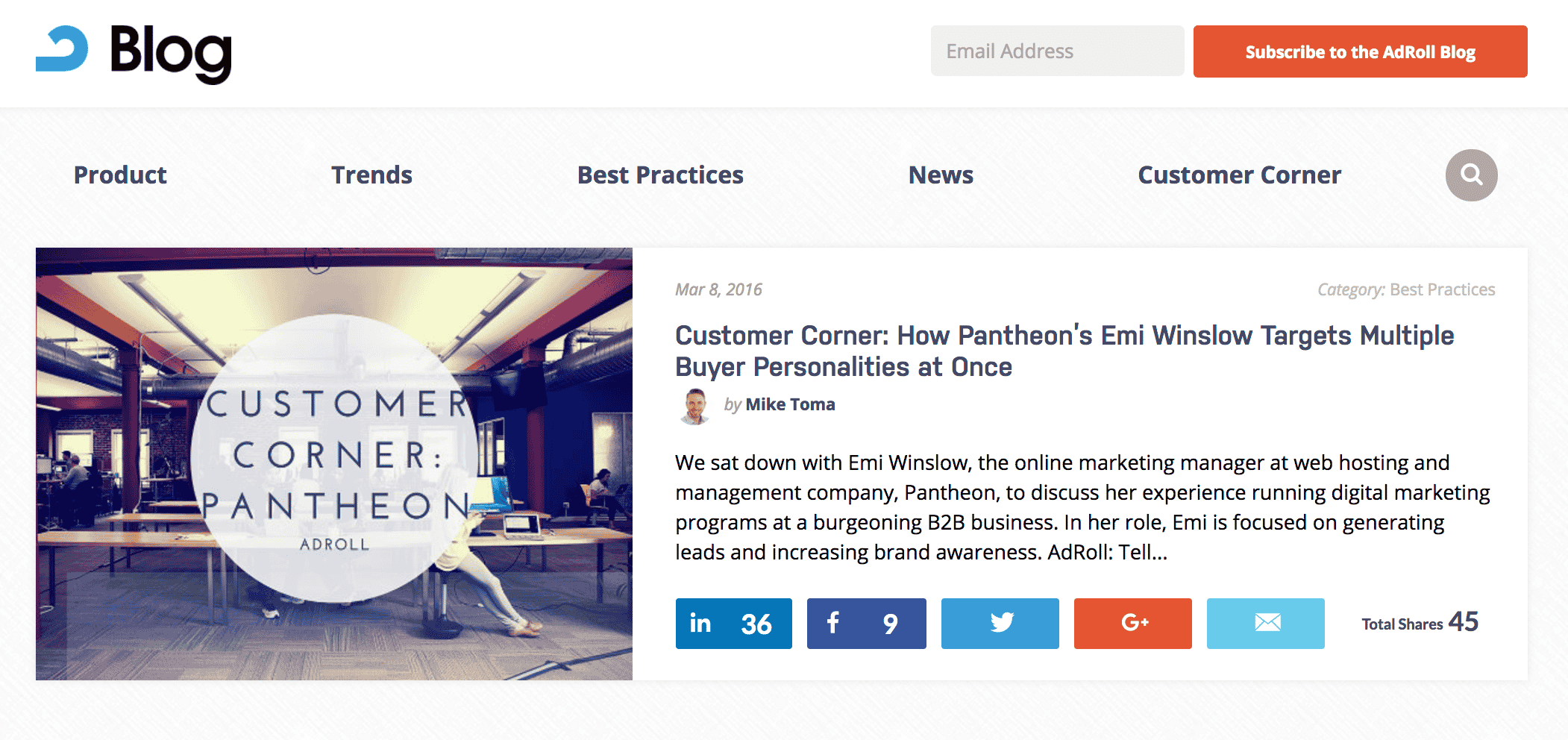Retaining customer loyalty and driving new sales is a big focus for small businesses. However, the idea of having to spend more than a couple of thousand dollars on marketing every month can sometimes be a burden due to budgetary constraints.
As a result, finding creative ways to market your small business can also have its challenges too when it comes to standing out from the crowd.
That’s why one of the key strategies I recommend to the small business clients I work with is to make sure they invest in a blogging strategy.
Here’s why:
- 77% of Internet users read blogs.
- 82% of consumers enjoy reading relevant content from brands.
- 81% of consumers trust advice and information from blogs.
- Small businesses that blog get 126% more lead growth than those who do not.
[STEP-BY-STEP TUTORIAL ON HOW TO START YOUR OWN BLOG IN UNDER 5 MINUTES]
In this blog post, I’ll highlight reasons why small businesses should be blogging…
Drive Website Traffic
The importance of driving web traffic is that it increases the likelihood of generating new sales and leads. With tools like CrazyEgg and Hotjar, you can also better understand what people are doing when they land on your website. Knowing this will help you make the necessary changes to improve the user experience and messaging.
More specifically, being able to track the type of blog content that’s driving the most traffic to your site will also help shape and map out your content calendar. Doing so fosters your ability to connect deeper with your target customers by positioning content that they care about.
Here are a few elements to make sure you have on your website to make sure people can easily get a hold of you are:
- Physical address
- Email address
- Phone number
- Contact form
Build a Community of Enthusiasts
Have a community filled with fans for your product/service will only foster growth initiatives. And having a blog with valuable content that serves your target customers will further help you grow your community.
Places you can leverage to distribute your content are:
- Niche sites. For example, once I publish new blog posts on my blog, I then repurpose that content to sites like LinkedIn, Medium, and Inbound.org. This helps me proliferate my content beyond my website, which increases the number of people exposed to my content.
- Facebook Groups. With categories ranging from relationships, business, art, and fitness, joining a group that’s relevant to your industry can play a critical role in gaining awareness for your business.
Additionally, the one thing I love about Facebook Groups is that many of them don’t allow members to focus only on promoting their products/services. What this means is that you’ll have the opportunity to really be a part of conversations happening among your target audience and participate without making people feel like you’re just trying to sell to them.
In turn, you end up having more authentic conversations that can help fuel content ideas, share relevant blog posts you have to any posed questions, and also understand the needs of your target audience.
Cost Effective
If you don’t have the funds to outsource blogging, then make time for it. Blogging is a super cost effective way to position thought leadership and authority within your industry.
Here are additional ways you can gain visibility with your blog strategy without breaking the bank:
- Reach out to influencers to be featured as a guest blogger.
- Partner with like-minded companies who are not competitive to cross-promote each other’s products/services within blog posts.
- Target long-tail keywords. These are keyword phrases that are lower in search volume and therefore, less competitive.
- Comment on relevant articles around the web. The key to success with this one is to make sure you aren’t just promoting your business, but genuinely providing thoughtful responses and feedback.
- Use relevant hashtags and tags across social media sharing out your blog posts.
- Combining similar blog topics and turning them into different content pieces such as an infographic, checklist, guide, etc.
Great Creative Outlet
Segmentation shouldn’t just take place with your email and advertising campaigns but can be done on your blog as well. For example, let’s say you have multiple buyer personas, you can position your blog to serve these personas by creating content that they consume.
You can call out these personas by content types or by roles. Here are a couple of examples:

- Contests
- Free Giveaways
- Challenges
- Quizzes
- Short videos for behind the scenes footage
- Surveys
Final Thoughts
To be successful with blogging, you must look at it as a must-have to foster business objectives while also connecting with your target audience.
Don’t be afraid to experiment. The more you do, the more you’ll discover which blog posts drive the most engagement and interest.
Knowing this will help map out your blogging calendar and ensure that you aren’t wasting your time writing content no one cares to read.
Related Posts:







